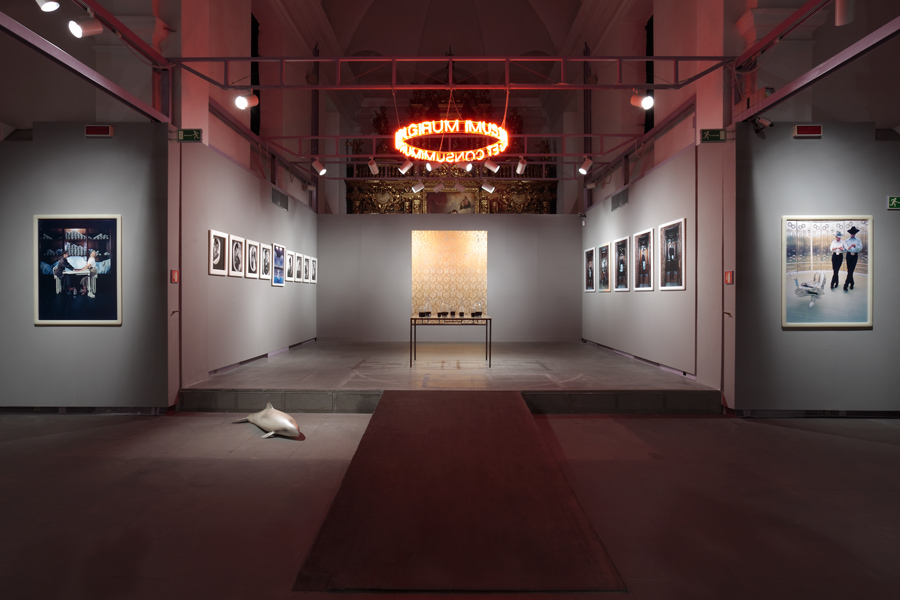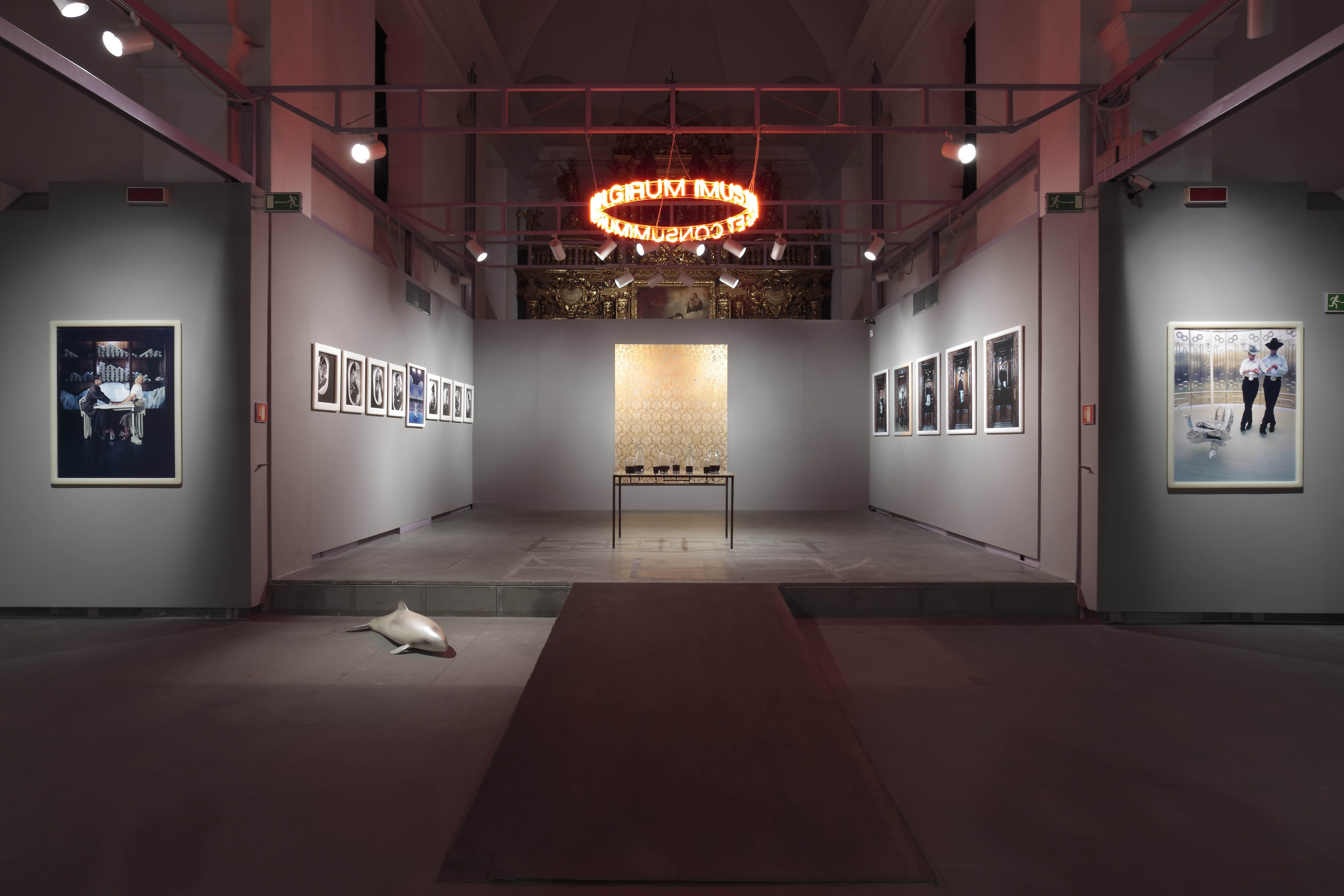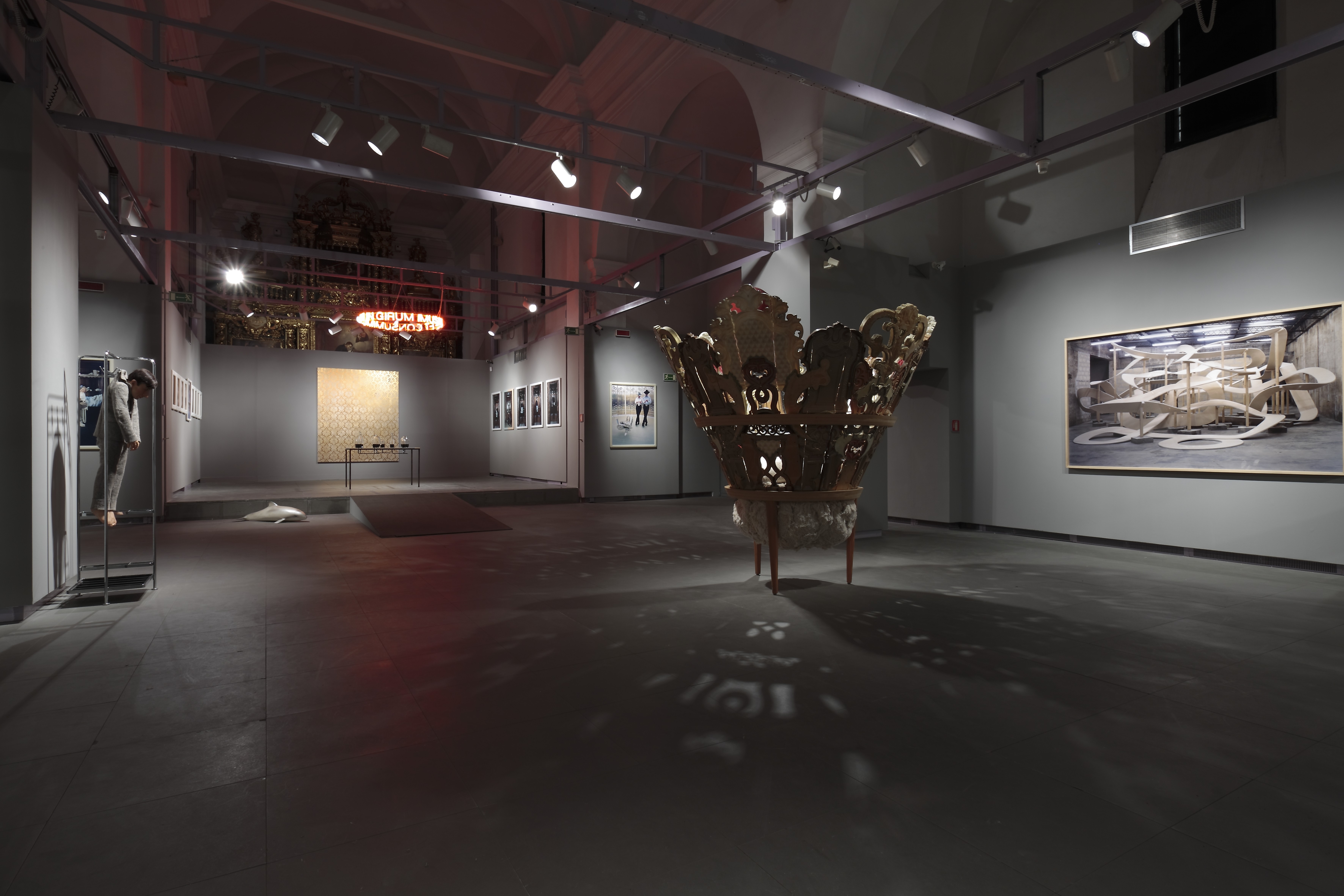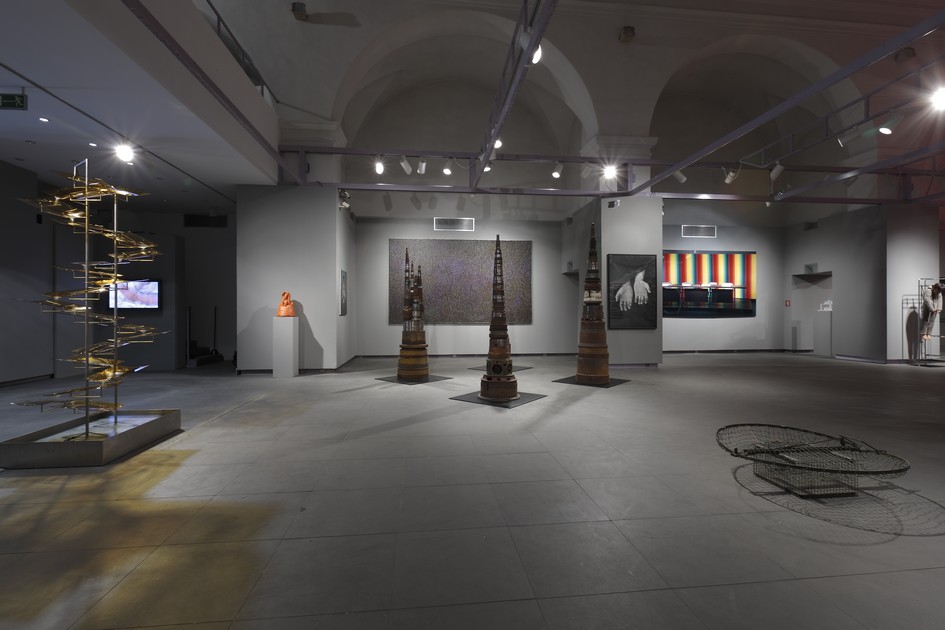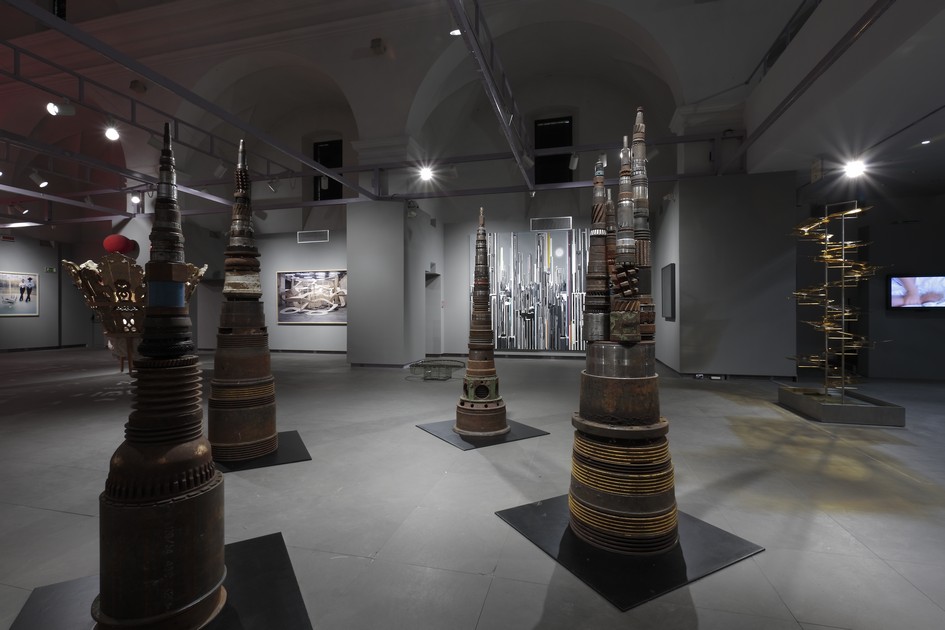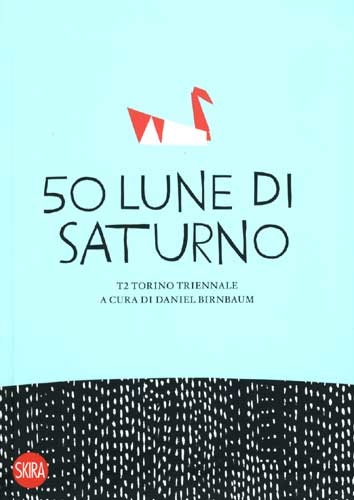Artists: Matthew Barney, Glenn Brown, Angela Bulloch, Maurizio Cattelan, Tony Cragg, Roberto Cuoghi, Thomas Demand, Flavio Favelli, Giuseppe Gabellone, Douglas Gordon, Mona Hatoum, Jeppe Hein, Damien Hirst, Carsten Höller, Anish Kapoor, Suchan Kinoshita, Udomsak Krisanamis, Shirin Neshat, Alessandro Pessoli, Paola Pivi, Jennifer Pastor, Susan Philipsz, Charles Ray, Thomas Ruff, Andreas Slominski, Yutaka Sone, Rudolf Stingel, Liu Wei, Wyn Evans Cerith
Alchemy is an ancient practice, combining elements of science, astrology, semiotics, medicine, mysticism, religion, and art. It is not just a semi-scientific discipline born from the union of physics and chemistry, but a form of magic that aims at finding the truth through the transformations of matter, and this involves an experience of growth as well as a process of liberation and spiritual purification for the author of the experiments. The exhibition aims at showing that contemporary art can be regarded as a form of modern alchemy deriving from a metaphysical and philosophical knowledge and, in its materialization, can acquire esoteric, mystical traits that go beyond its psychological value. Contemporary works of art, like the processes and symbols of alchemy, often possess an inherent meaning produced by the link between the material representation and the physical transformation of the world around us.
Like alchemy, contemporary art does not separate the material from the symbolical and philosophical, and metaphorically transforms the search for the philosopher's stone into a search for perfection and an attempt at crossing the boundaries of human existence. In art this process, symbolized by the classic alchemic process in which simple metals are changed into gold, becomes the transformation of matter and everyday objects into works of art that carry multiple messages.
As alchemy tends towards a cryptic, symbolical language, making it difficult to define the transformations and relationships of objects among themselves, while remaining suspended in a dreamlike universe, so contemporary art leaves it to every individual to interpret and grasp the message conveyed by the individual works, and thus enter into a direct relationship with the artist. As famous psychoanalyst Carl Gustav Jung claimed, the stages through which the opus alchemicum takes place should find a correspondence in the individuation process, seen as the development of the awareness of one's own individuality and the discovery of the inner self. Contemporary art, then, in this alchemic reading, becomes a projection into the material world of the archetypes of the collective unconscious, the representation of the psychological path which, in turn, represents the development of self-awareness and the liberation of the self from its inner conflicts. Therefore, as alchemy, in the past, aimed at finding universal knowledge, so contemporary artists, with their works, try to narrate the world around us, its transformations and contradictions, leaving room for the search for truth and the inner struggle of humans between good and evil.
This exhibition offers a dreamlike journey, to rediscover, in an alchemic key, some of the great masters of contemporary art, revealing their vision of today's world through the analysis of their works. Artists somehow become alchemists when, through the transformation of matter, they try to convey a new version of reality to the public. For artists, like alchemists, have no reason to separate the material from the symbolical-philosophical. This exhibition will take the public on a journey through the works the artists of today have created with all available means of expression, from video to painting, from sculpture to installation and photography, to recreate a mystical and spiritual landscape. The exhibition can be regarded as an instance of iconological reading of art, a method that can boast a long tradition, but has nonetheless been neglected in modern times. The search for a relationship between art and alchemy comes from an important tradition of reading, with the help of iconology and alchemy, some of the masterpieces of art history, from Dürer's Melencolia to Leonardo's Mona Lisa, through Bosch's trypich The Garden of Earthly Delights, down to the alchemic readings of Duchamp's Large Glass or the representations of the Kabbalah in Anselm Kiefer's canvases.
